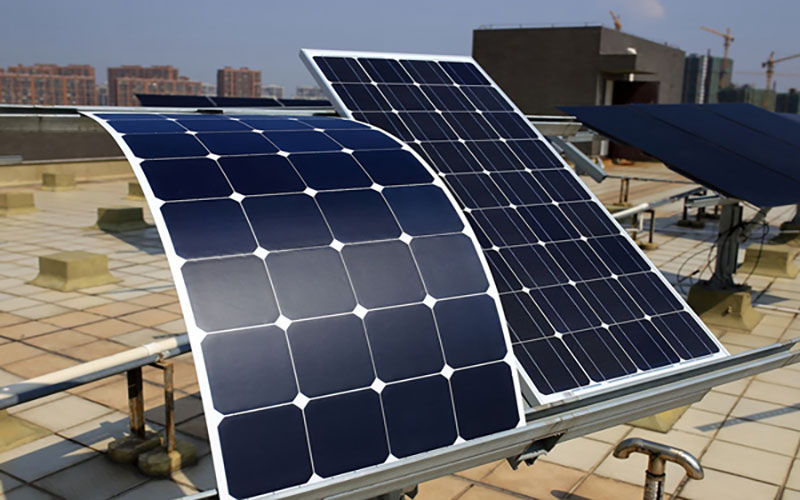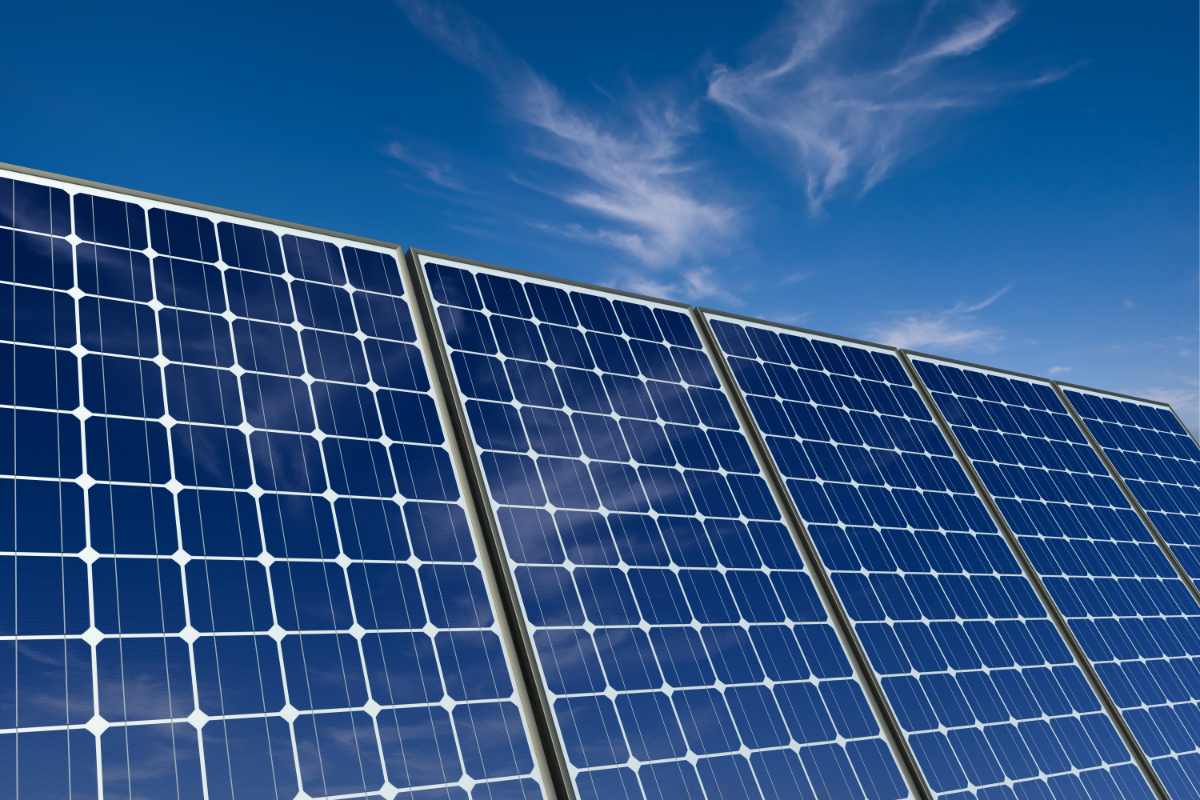Thin-Film vs Monocrystalline solar Module: 5 Comparisons
Thin-film panels offer lower costs (0.50−1/W) and flexible installations but lag in efficiency (10-13% vs monocrystalline’s 20-24%). Monocrystalline excels in lifespan (25+ vs 15-20 years) and space efficiency (1.5x more power per m²), while thin-film performs better in low-light and high-heat conditions. Degradation rates favor monocrystalline (0.3-0.8%/year vs 1-1.5%).
Cost and Budget Differences
When choosing between thin-film and monocrystalline solar panels, cost is often the deciding factor. Monocrystalline panels typically range from 0.90to1.50 per watt, while thin-film panels can be as low as 0.50to1.00 per watt—making them 20-40% cheaper upfront. However, the real cost difference comes from long-term efficiency and space requirements. Monocrystalline panels last 25-30 years with efficiency rates of 18-22%, whereas thin-film panels degrade faster, averaging 10-15 years with 10-13% efficiency.
"A 5kW monocrystalline system may cost 12,000−18,000 installed, while thin-film could be 10,000−15,000. But over 20 years, monocrystalline produces 30-50% more energy, meaning higher savings on electricity bills."
Thin-film panels are lighter (15-20 lbs per panel vs. 40-50 lbs for monocrystalline) and easier to install, reducing labor costs by 10-20%. But because they take up 30-50% more space, large-scale installations may need extra mounting structures, increasing total expenses. Monocrystalline panels, despite the higher initial price, pay back faster—usually 5-8 years compared to 7-10 years for thin-film.
Government incentives (like the 30% federal tax credit in the U.S.) apply to both, but since monocrystalline systems generate more kWh per dollar, the return on investment (ROI) is stronger. For example, a 15,000monocrystallinesystem∗∗mightsave∗∗1,500/year on electricity, while a 12,000thin−filmsystem∗∗saves∗∗1,000/year—meaning the monocrystalline setup breaks even sooner.
Maintenance costs also differ. Thin-film panels are more prone to damage from hail or debris, with repair rates 15-25% higher than monocrystalline. Additionally, their lower efficiency means you might need more panels to match the same output, increasing wiring and inverter costs.

Efficiency in Sunlight
When comparing thin-film and monocrystalline solar panels, efficiency is a key factor that directly impacts energy output, space requirements, and long-term savings. Monocrystalline panels dominate in peak efficiency (18-22%), while thin-film typically ranges between 10-13%. This means a 400W monocrystalline panel will generate 30-50% more electricity per square foot than a thin-film panel of the same wattage.
But efficiency isn’t just about lab conditions—real-world performance depends on temperature, shading, and sunlight angles. Monocrystalline panels lose 0.3-0.5% efficiency per °C above 25°C, while thin-film performs slightly better in heat, degrading at 0.2-0.4% per °C. In hot climates (above 35°C), thin-film may produce 5-10% more energy in summer, but monocrystalline still wins annually due to higher baseline efficiency.
Factor | Monocrystalline | Thin-Film |
Peak Efficiency | 18-22% | 10-13% |
Temp Coefficient | -0.3% to -0.5% per °C | -0.2% to -0.4% per °C |
Low-Light Performance | Loses 15-20% output in cloudy weather | Loses 10-15% (better in diffuse light) |
Space Needed for 5kW | 250-300 sq ft | 400-500 sq ft |
Annual Degradation | 0.5-0.8% per year | 1-1.5% per year |
Shading impacts monocrystalline panels more severely—if even 10% of a panel is shaded, power output can drop 30-50% due to cell interdependency. Thin-film handles shading better, with only 10-20% power loss under the same conditions. This makes thin-film a better choice for partially shaded roofs or areas with frequent cloud cover.
Angle and sunlight exposure also matter. Monocrystalline panels perform best at 25-35° tilt angles in direct sunlight, while thin-film absorbs diffuse light more effectively, making it 5-15% more efficient in early mornings/late afternoons. However, monocrystalline’s higher peak efficiency means it still generates more total kWh per day in most locations.
Durability impacts efficiency over time. Monocrystalline panels retain 85-90% efficiency after 25 years, while thin-film drops to 75-80% in the same period. This means a 10kW monocrystalline system will produce ~8,500 kWh/year initially and ~7,200 kWh/year after 25 years, whereas thin-film might start at ~6,500 kWh/year and fall to ~5,000 kWh/year.
Size and Space Needs
When planning a solar installation, physical space is often the most limiting factor—and the difference between thin-film and monocrystalline panels is dramatic. A standard 60-cell monocrystalline panel measures about 65 x 39 inches (5.4 x 3.25 ft) and produces 300-400W, while an equivalent thin-film panel covers 30-50% more area for the same wattage. This means a 6kW monocrystalline system fits neatly on a 400 sq ft roof, while thin-film would need 600+ sq ft—a dealbreaker for many homes.
Factor | Monocrystalline | Thin-Film |
Panel Dimensions | 65" x 39" (5.4 x 3.25 ft) | 72" x 48" (6 x 4 ft) |
Power Density | 15-20W per sq ft | 8-12W per sq ft |
Roof Space for 10kW | 500-600 sq ft | 800-1,000 sq ft |
Weight per Panel | 40-50 lbs | 15-25 lbs |
Roof Load Capacity | Needs 3-5 lbs/sq ft | Needs 1.5-3 lbs/sq ft |
Weight matters too. Monocrystalline panels add 3-5 lbs per sq ft to a roof’s load, which may require reinforcement for older homes. Thin-film, at 1.5-3 lbs per sq ft, is easier to install on weak or curved surfaces (like warehouses or RVs). But the space penalty is real: to match a 10kW monocrystalline array (25-30 panels), thin-film needs 40-50 panels—eating up extra mounting hardware and wiring costs.
Roof shape and orientation also play a role. Monocrystalline panels perform best at 15-40° tilt angles, so steep roofs (like 8/12 pitch) maximize output. Thin-film’s lower efficiency forces compromises: you might need to cover unused roof sections (like north-facing slopes) to hit energy targets, reducing design flexibility.
For ground-mounted systems, thin-film’s lower weight saves on racking expenses (about 0.10−0.20 per watt less), but the land area required jumps by 50-70%. A 20kW monocrystalline farm fits on 1,000-1,200 sq ft, while thin-film needs 1,600-2,000 sq ft—increasing land lease or purchase costs.
Commercial vs. residential needs split further. Warehouses with large, flat roofs can exploit thin-film’s lightweight advantage, but homes with limited space almost always choose monocrystalline. For example, a 2,000 sq ft house with 800 sq ft of usable roof could fit 12-16 monocrystalline panels (4-6kW) but only 8-10 thin-film panels (3-4kW)—a 25-40% power gap.
Durability Over Time
Solar panels are a 25+ year investment, but not all technologies age equally. Monocrystalline panels typically come with 25-30 year warranties and retain 85-90% of their efficiency after that period, while thin-film panels usually degrade to 75-80% efficiency within just 10-15 years. This stark difference in longevity means your long-term energy output and return on investment vary dramatically between the two technologies.
The annual degradation rate tells the story: monocrystalline panels lose 0.5-0.8% efficiency per year, while thin-film degrades at 1-1.5% per year. After a decade, a monocrystalline system will still operate at 92-95% of its original output, whereas thin-film drops to 85-90%. By year 20, the gap widens—monocrystalline holds 82-88% efficiency, while thin-film struggles at 70-80%. If you install a 10kW system, that means monocrystalline will generate ~8,200 kWh/year at year 20, while thin-film might only produce ~7,000 kWh/year, a 15%+ drop in performance.
Environmental wear also impacts durability differently. Monocrystalline panels use tempered glass that withstands 1-inch hail at 50 mph, while thin-film’s polymer layers are more vulnerable to microcracks from wind debris or heavy snow loads. Field studies show thin-film failure rates are 2-3x higher in areas with frequent storms or extreme temperature swings. In desert climates, where UV exposure is intense, thin-film’s plastic encapsulation can yellow or delaminate after 8-12 years, reducing light transmission by 5-10%. Monocrystalline, with its inert silicon structure, shows almost no UV degradation even after 20+ years in harsh sunlight.
Corrosion resistance is another key factor. Monocrystalline frames are typically anodized aluminum, which resists rust even in coastal salt spray environments. Thin-film’s flexible substrates and adhesives, however, can suffer from moisture ingress in humid climates, leading to hot spots or electrical leakage over time. In tropical regions, thin-film systems see 10-20% higher failure rates after 5-7 years compared to monocrystalline.
Manufacturing defects play a role too. Monocrystalline panels have <0.1% early failure rates due to standardized silicon wafer production, while thin-film’s deposition process can lead to thin spots or voids, causing 0.5-1% of panels to underperform or fail within the first 2-3 years. Most warranties cover this, but replacement delays can cost you 200−500 in lost energy production per faulty panel.
Real-world lifespan data from solar farms confirms the trend. Monocrystalline arrays installed in the early 2000s still operate at 80-85% efficiency today, while thin-film systems from the same era often needed partial replacements after 12-15 years. For homeowners, this means monocrystalline pays off longer—a system installed today will likely still be producing 75%+ of its rated power in 2045, while thin-film may require a full overhaul by 2035-2040.

Installation and Maintenance
When it comes to getting solar panels on your roof, installation complexity and ongoing upkeep are where thin-film and monocrystalline technologies show major differences. Monocrystalline panels typically require 2-3 installers for 1-2 days to set up a 6kW residential system, while thin-film can sometimes be installed 20-30% faster due to lighter weight and flexible mounting options. But speed isn't everything—long-term maintenance costs tell a different story.
Factor | Monocrystalline | Thin-Film |
Installation Time (6kW) | 8-16 man-hours | 6-12 man-hours |
Labor Cost per Watt | 0.15−0.25 | 0.10−0.20 |
Mounting System Cost | 0.08−0.12/W | 0.05−0.10/W |
Annual Cleaning Needs | 1-2 times | 2-4 times |
Inverter Replacement | Once in 10-15 years | Once in 8-12 years |
Panel Failure Rate | <0.5% in first 5 years | 1-2% in first 5 years |
Roof compatibility is a big factor in installation. Monocrystalline's rigid frames require perfectly flat surfaces or adjustable racking (adding 500−1,000 to system costs), while thin-film's flexible modules can conform to slightly curved roofs, potentially saving 300−800 in mounting hardware. However, thin-film's lower efficiency means you'll need 30-50% more roof area—which isn't always available.
Electrical work differs too. Monocrystalline systems typically use string inverters (0.10−0.15/W) that last 10-15 years, while thin-film often requires microinverters (0.20−0.30/W) due to shading sensitivity. This adds 800−1,500 to thin-film system costs, though microinverters do offer panel-level monitoring.
Maintenance is where costs add up. Thin-film's lower tilt angles (often 5-15°) cause 50-100% more dust accumulation than monocrystalline's steeper 20-35° setups. In dusty regions, this can reduce thin-film output by 5-10% annually unless cleaned quarterly (costing 150−300/year vs. monocrystalline's 100−200/year).
Repair costs also favor monocrystalline. While both types rarely fail, thin-film's laminate layers are 3-5x harder to fix when damaged—a single panel replacement costs 250−400 vs. monocrystalline's 150−300. And because thin-film degrades faster, you're more likely to face partial system replacements after 10-12 years, adding 1,000−3,000 in unexpected costs.
Permitting and inspections slightly favor thin-film in some areas. Their lower weight (15-25 lbs vs. 40-50 lbs per panel) sometimes avoids structural engineering reports, saving 200−500 in paperwork. However, many jurisdictions now require full structural reviews regardless of panel type.